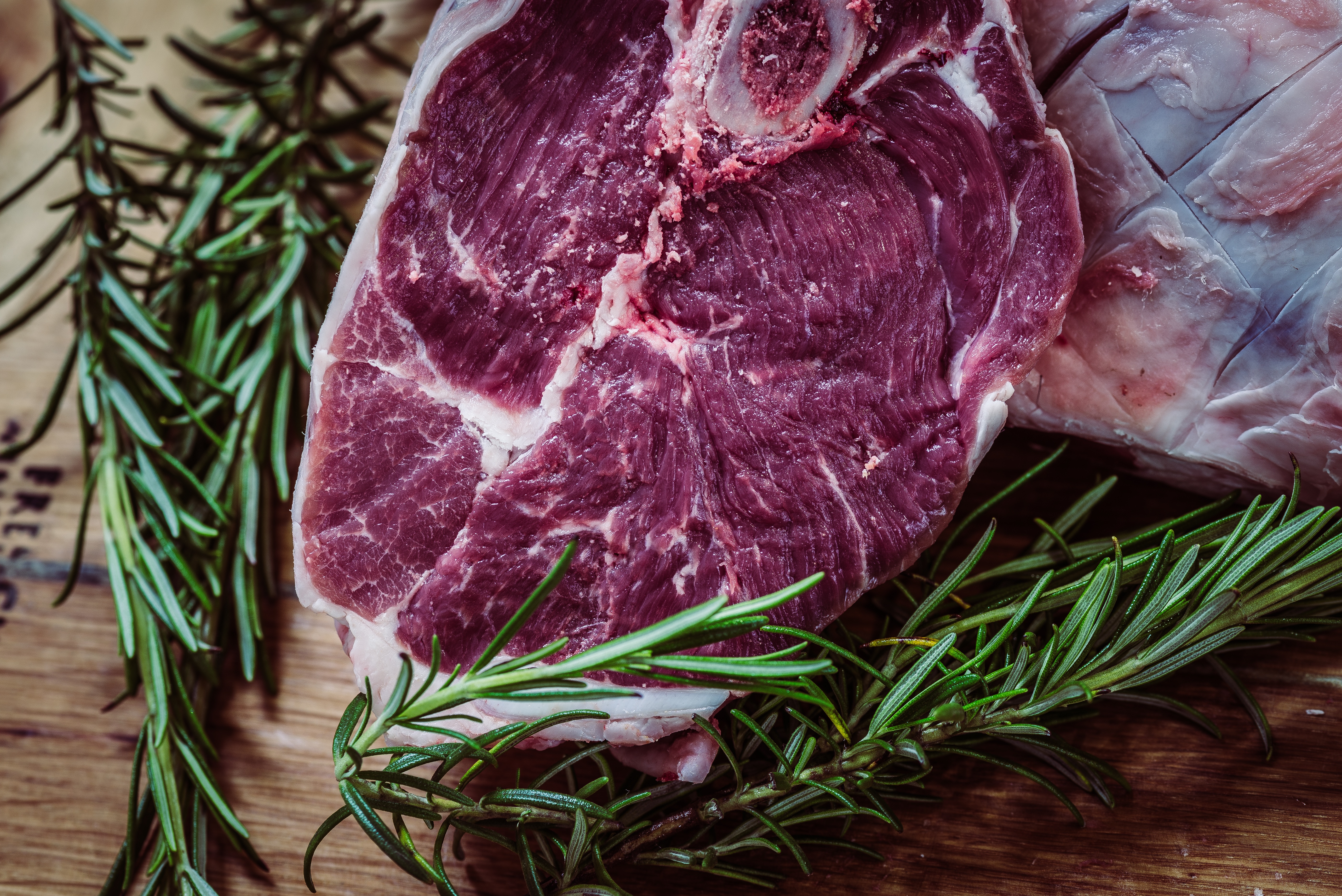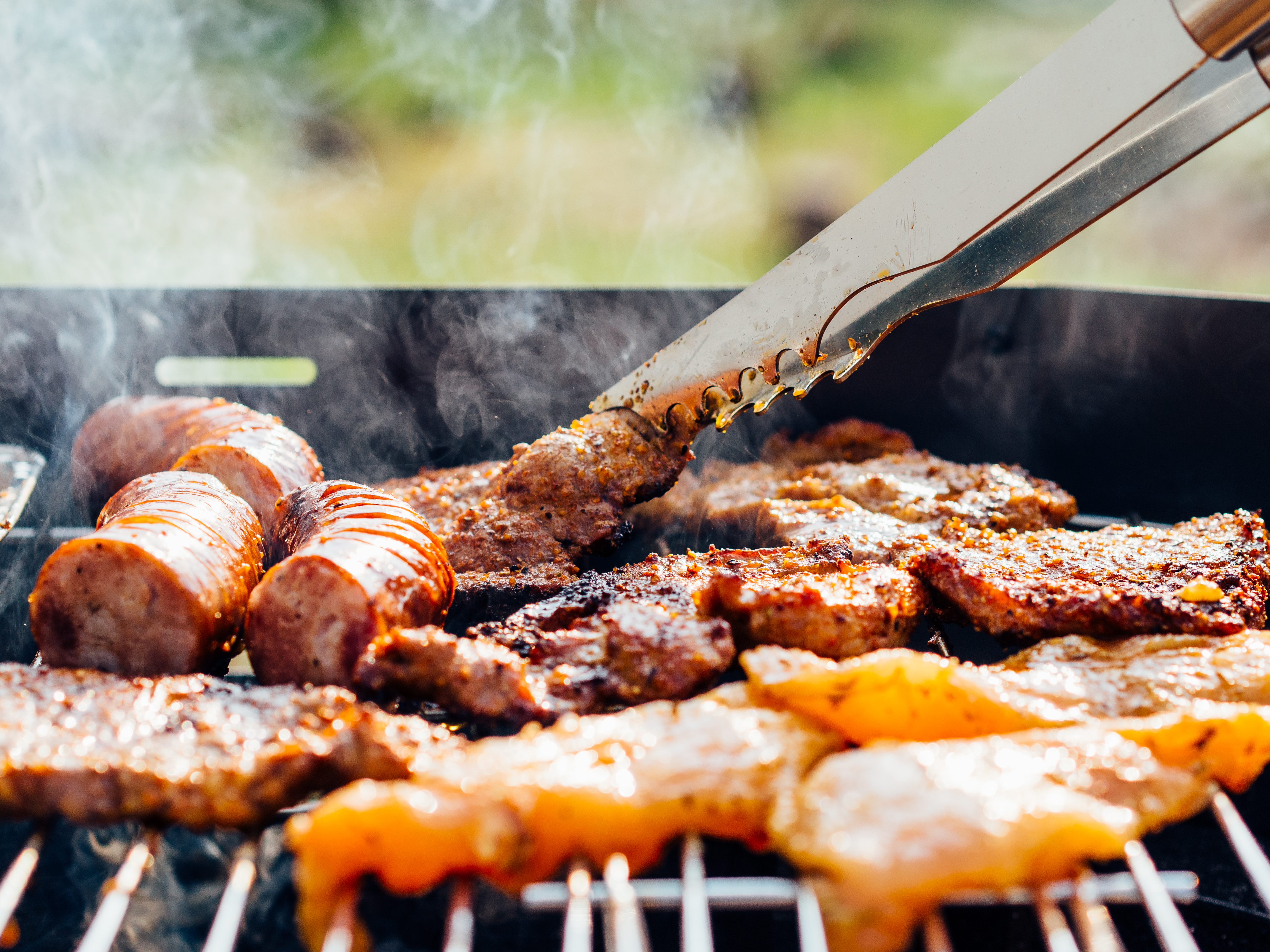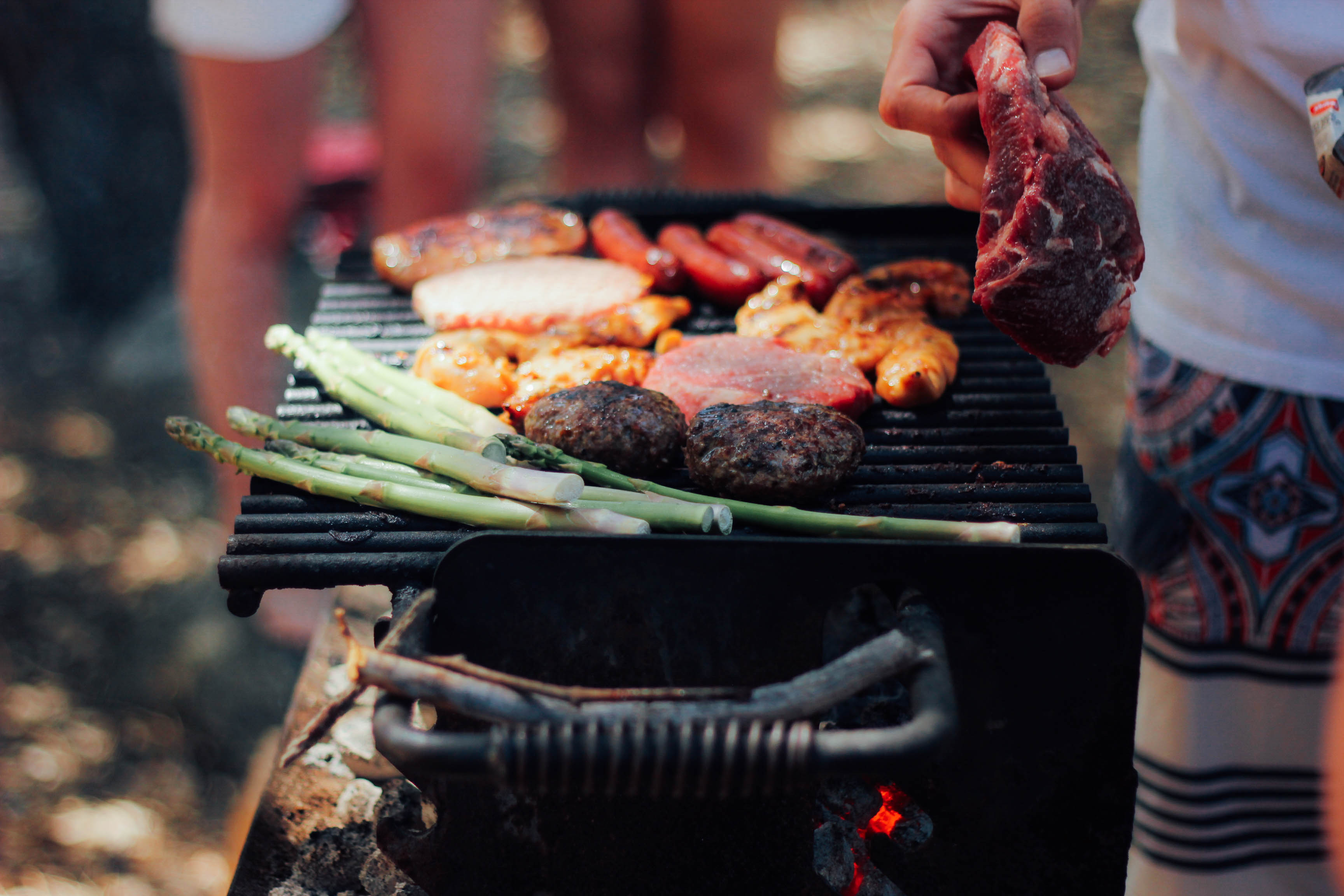
Summer’s Safe Grilling Guide
Clean
- Do not rinse meat, especially in the sink, since bacteria can contaminate other surfaces in the kitchen.
- Wash and sanitize all utensils and surfaces after handling raw meat and poultry to avoid spreading germs to other food.
- Wear disposable plastic gloves when handling raw meat. Make sure you clean your hands and gloves often with warm water and soap for at least 20 seconds. Avoid contaminating surfaces in the kitchen with bacteria from the raw meat or juice.
- Some studies show that a grill can get pretty germy while other studies maintain that grills are completely sanitary because of the high heat consistently used. Either way, it can’t hurt to clean off the grill before using it.

Separate
- Plastic bags can keep meat and poultry separated from other foods, both in the grocery cart and in the refrigerator, so that contaminated juices don’t drip onto other foods.
- Use a different cutting board to trim raw meats and prepare fresh produce. The only time it is ever safe to chop raw vegetables on the same cutting board after holding raw meat is if you are cooking those veggies along with the meat.
- Never use the same plates or platters for raw and cooked meat.
- When marinating meat at home, keep it refrigerated, taking special care not to drip the raw meat marinade on kitchen surfaces. Never use the same marinade from the raw meat as a glaze on cooked meat unless it has been thoroughly heated to kill the germs first.

Cook
- Thaw meat either in the refrigerator or in water heated up to at least 100˚ (for cuts that are about 1” thick). Don’t ever leave frozen meat to thaw at room temperature (on the counter or in the sink).
- Always cook meats and poultry so that an instant read thermometer in the thickest part of the meat reaches the following temperatures:
- Hamburgers - 160˚
- Poultry- 165˚
- Beef and Pork-Can be taken off heat at 145˚; allow to rest after cooking for at least 3 minutes
Chill
- Freshly prepared food should be eaten or refrigerated within two hours, or one hour if it is an especially hot summer day.
- Use an ice cooler to keep perishable foods cold when you are outside.
Shopping
Mechanically tenderized beef is labeled so that you know which pieces can be cooked medium-rare (only “intact” meats). If you see “mechanically,” “blade,” or “needle” tenderized on the label, the pieces need to be cooked thoroughly so that even the middle of the cut reaches the proper cooking temperature, just like ground beef.
Look for meats that were raised without antibiotics. The overuse of antibiotics in the meat industry has led to “superbugs” that can infect humans and are drug resistant.
Watch Out for PAHs and HCAs
Fat drippings from high-fat grilled meats combined with the heat from the flame or coals can produce potentially carcinogenic chemicals called PAHs (polycyclic aromatic hydrocarbon). These can be released into the smoke and also form directly on the meat if it is charred.
- Avoid placing meat directly over the coals or heat source where smoke is heaviest to minimized PAHs.
- Lean meats, poultry, fish, vegetables, and veggie burgers are good choices to avoid PAHs.
When meat is cooked with extremely high temperatures, the heat creates potentially carcinogenic HCAs (heterocyclic amines), and these can increase the longer the meat is exposed to the high temperatures. To limit the amount of HCAs:
- Stick to seafood and vegetables, which are less likely to form HCAs or cut back on grilling time by doing some precooking in the oven.
- A marinade helps to prevent HCAs during the cooking process.
- Precook your meats in the microwave for 30 to 90 seconds and throw out the juice that accumulates. The flavor doesn’t change but the likelihood of HCAs forming is significantly lowered.

For more information about the proper safety methods, go to http://www.foodsafety.gov/keep/basics/index.html

